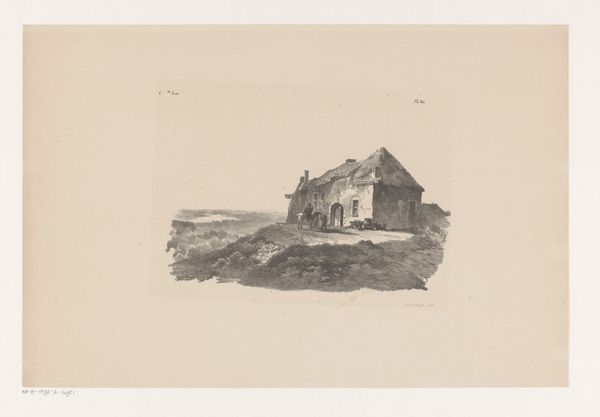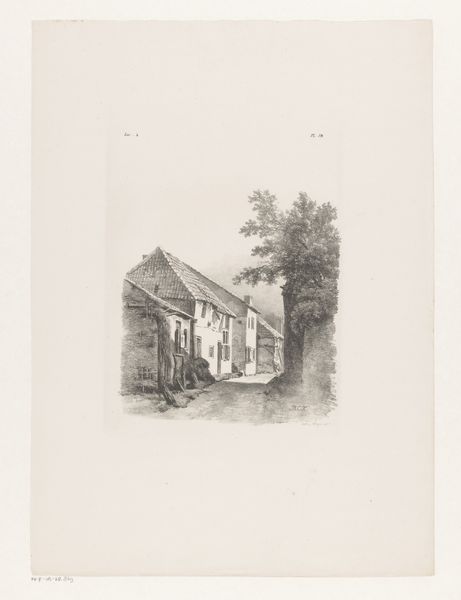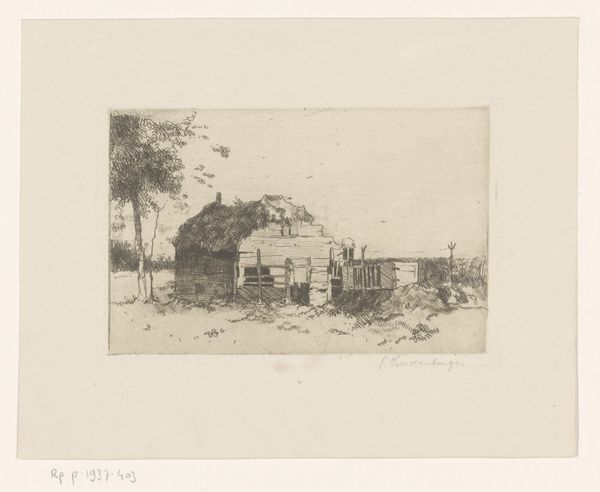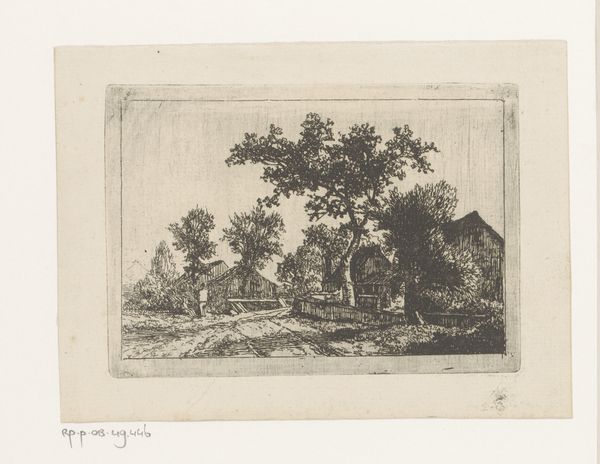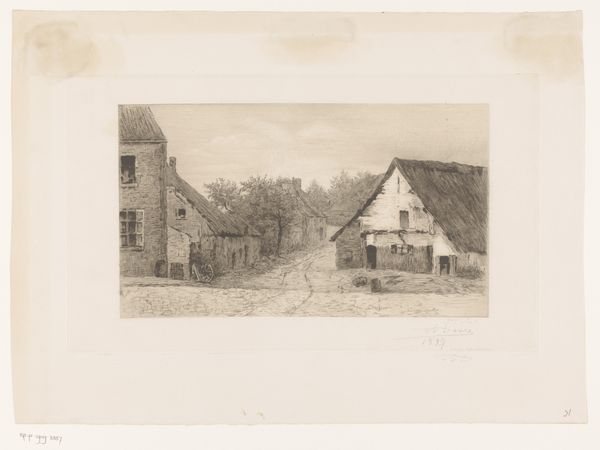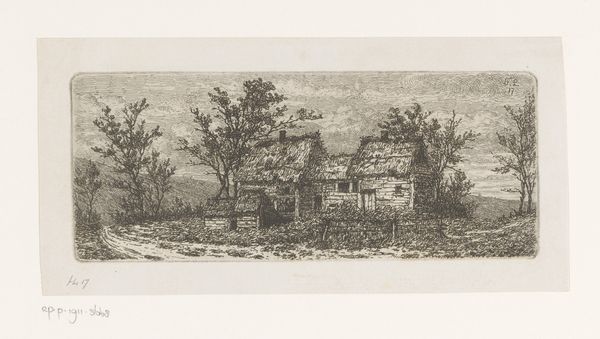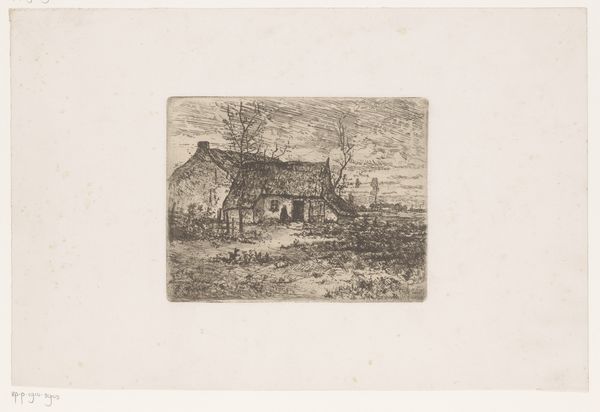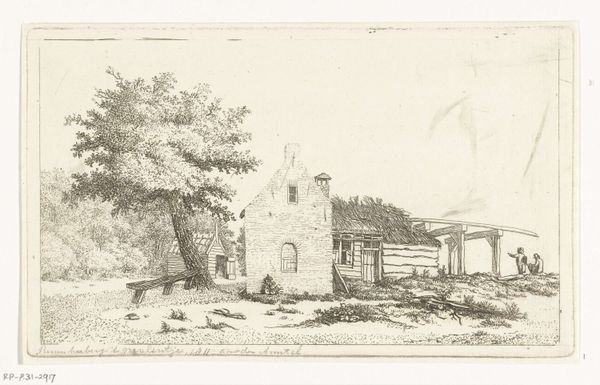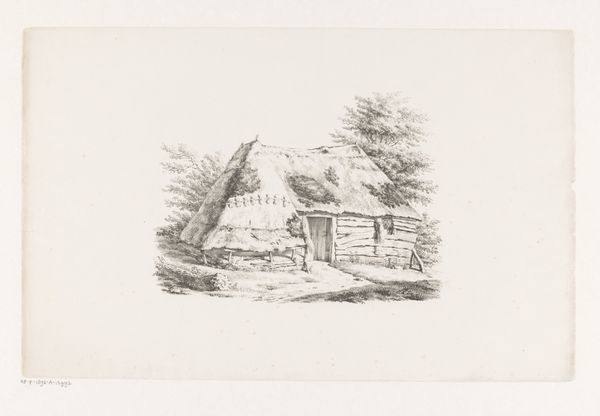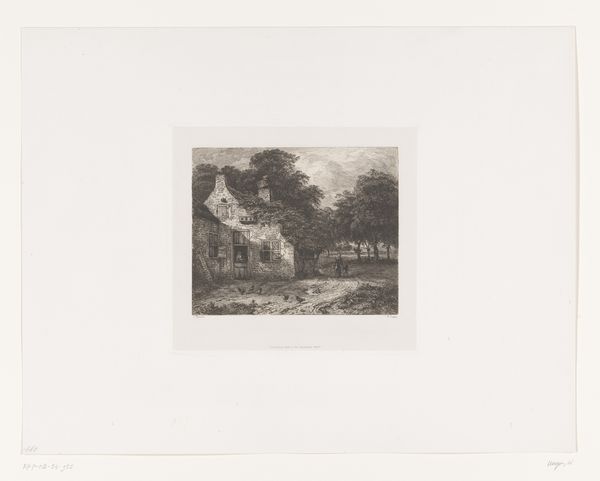
drawing, pencil
#
drawing
#
dutch-golden-age
#
pencil sketch
#
landscape
#
romanticism
#
pen-ink sketch
#
pencil
#
genre-painting
#
realism
Dimensions: height 345 mm, width 475 mm
Copyright: Rijks Museum: Open Domain
Curator: Welcome. We're standing before a drawing titled "Boerderijen aan een weg," or "Farms Along a Road," crafted by Barend Cornelis Koekkoek around 1844-1845. It's currently housed here at the Rijksmuseum. Editor: It has this quiet, almost melancholic feel to it, doesn't it? The way the buildings huddle together under that tall, bare tree. It speaks of rural isolation and perhaps a simpler time. Curator: That initial emotional response is interesting. Koekkoek was known for his idealised landscapes, drawing heavily from the Romanticism movement. This wasn't simply about depicting reality but evoking certain feelings and values associated with the countryside. There is a definite sentimentality toward country life that ignores much of its social context. Editor: I notice the prominent tree. Solitary trees, in art, often represent a kind of steadfastness, a connection to the earth, and a silent witness to the passage of time. Its starkness almost accentuates the fragility of the structures around it. Curator: Absolutely. And, looking at the artist’s history, Koekkoek saw the natural world as a direct reflection of the divine. Trees especially functioned as emblems of strength and continuity in a rapidly modernising world. It might be telling that it's centered but bare of leaves. Perhaps an anxious look at what modern progress meant to a rooted, slower way of life? Editor: There's also a delicate dance of light and shadow in the drawing—the pencil work highlights the textures of the buildings and suggests the quality of the daylight, lending depth to the imagery. Curator: Precisely. But note the buildings and even the way figures, seemingly farm workers or family, almost melt into the background. It's a glimpse into 19th-century Dutch life through rose-tinted glasses—privileging notions of bucolic serenity over acknowledging real life difficulties and inequality. I am immediately critical of that. Editor: The interplay between idealized symbolism and careful realism adds a layer of tension. I can almost feel the presence of human activity despite its near absence. Curator: So, a landscape invested with Romantic ideals clashes subtly against social critique… Editor: I suppose it reveals how the cultural memory and the ideal of simplicity in landscape could serve as both comfort and reminder in times of change. Thank you. Curator: Indeed, a drawing reflecting both an aesthetic choice and implicit social messaging worth considering more deeply today.
Comments
No comments
Be the first to comment and join the conversation on the ultimate creative platform.



